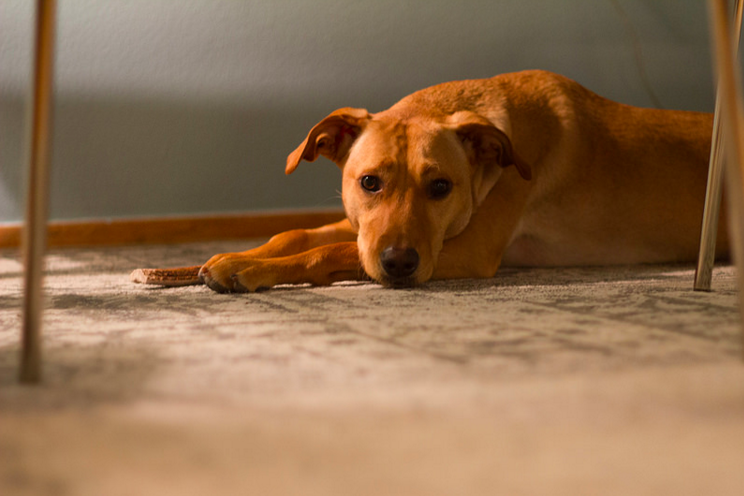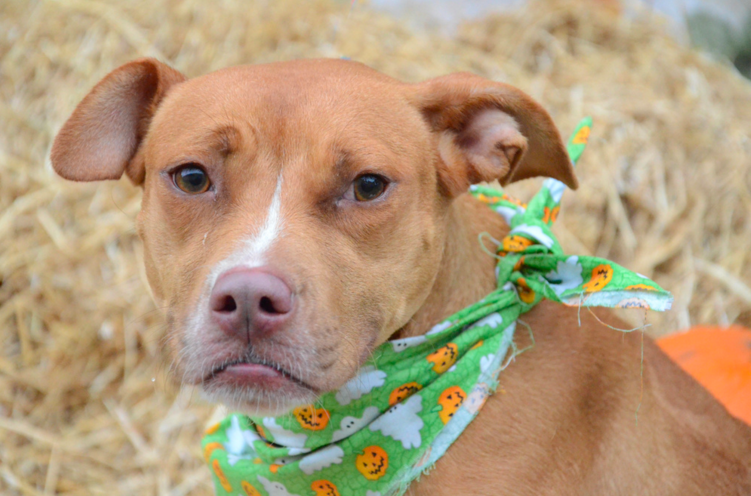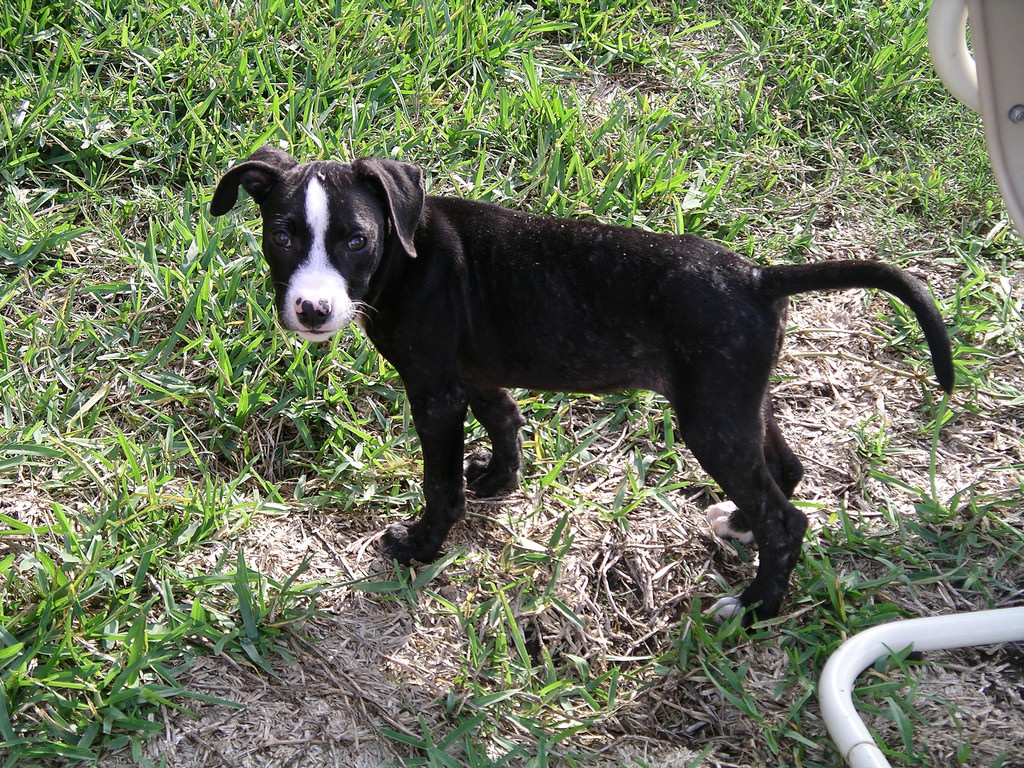What to do if your dog has ringworm

Getting a new dog poses lots of things to consider and new challenges.
Puppies and dogs rescued from shelters are prone to parasites, fungus and bacteria, often coming home with worms and skin infections.
The close quarters of rescues and shelters make these animals more prone to bringing home some extra goodies that we didn’t quite intend on picking up.
First, it’s important to remember that proper deworming and veterinary care is paramount to helping keep internal parasites and fungi out of your dog’s system. While you may want to socialize a new dog right away, be aware of the annoyances and dangers it can pose – including with your dog’s health.
You can stay a step ahead of the game by educating yourself on the non-animal risks that can befall your new dog. Skin rashes, mange, ticks and worms can all wreak havoc on your favorite pup, but not if you know what to look for.
In short here’s what to do if you suspect your dog has ringworm: Watch for a round, raised appearance on your dog’s skin. If you find one, take them to the vet immediately. Give your house a thorough cleaning and stick to your dog’s post-care treatment as suggested by your vet.
What is ringworm?
Despite its name, Ernest Ward, DVM, notes that ringworm isn’t actually a worm. Ringworm is a common fungal skin infection otherwise known as Tinea.
Named for its round, red, raised appearance on the skin, ringworm grows and lives in the outermost layer of the skin. While unsightly and unappealing, the fortunate news is that ringworm is generally superficial and will only affect certain parts of a dog’s body.
Puppies and sick or elderly dogs can experience more widespread outbreaks of the fungal infection on their bodies.
Don’t be fooled: dermatophytosis(ringworm) can also affect just about any mammal – including you! It’s always possible that you can pick up the infection before your dog does, meaning you could pass it to them if you’re not careful.
Symptoms and effects of ringworm
Dermatophytosis is extremely contagious, and while mostly harmless can be spread quickly among animals and humans. Veterinarian intervention will be necessary, but you can reduce the spread of the fungus by being aware of the symptoms and effects.
Contrary to what you may be thinking, ringworm does not cause itching or discomfort. Typically it presents itself in dogs through hair loss, revealing the classic raised, red ring on the skin. If you notice this happening to your dog, be sure to safely dispose of the lost fur as the infected follicles can spread the ringworm to those who come into contact with it.
Be sure to contact your veterinarian if your dog begins exhibiting the following:
- Loss of fur in circular patterns
- Raised, inflamed skin
- Brittle, cracked nails
Even if you’re fairly certain that your dog does not have ringworm, reach out to your vet if they are displaying one of these symptoms. Many illnesses, diseases and even nutrient deficiencies can present themselves with similar symptoms.

Sheeba has ringworm, but at least it’s not itchy or painful. Image: Jim Cristea
How does a dog become infected with ringworm?
Dogs can get ringworm only when they have direct contact with it, which can happen when they are interacting with another dog. Socialization is a very important aspect of your dog’s life, but quarantining them or restricting their access to other dogs if you think an infection is possible is better for their health.
Other dogs aren’t the only threat and probably aren’t even the most likely source of ringworm. Direct contact with an object infected with contaminated hair follicles causes a majority of ringworm cases. The following are common objects that spread ringworm:
- Couch
- Blankets (any linens your dog has access to)
- Grooming supplies
- Bowls
- Dog bedding
Since broken hair follicles are the most likely culprit in spreading the fungus, it’s important to regularly clean and sterilize objects your dog often comes into contact with.
The ringworm fungus can live for up to 18 months if not treated, which means your dog can reinfect himself, any other family pets and your family for over a year if you’re not thorough.
Diagnosing ringworm in dogs
So, you’ve noticed some of the symptoms associated with ringworm in your dog. It’s time to get him to the vet ASAP before you come down with it too. Veterinarians are well versed in this annoying infection and are easily able to make a diagnosis for you.
To do so, the veterinarian will take samples of your dog’s skin and fur from the presumed infection site. After performing a fungal culture on these areas, they will be able to confirm if your dog has ringworm or not.
Treating ringworm in dogs
Once your dog has been diagnosed with ringworm, treatment is fairly simple and is almost exclusively on an outpatient basis.
For mild cases of ringworm, your vet will likely prescribe a topical remedy. This medicine can be applied to the infected areas (be sure to wear gloves) and often results in a quick recover. For dogs with longer fur, it may be beneficial to trim or shave the infected area(s).
You should also consult your vet about any shampoos or rinses they recommend for your dog to aid in the healing of the infection.
For severe cases of ringworm, your vet will prescribe an oral antibiotic to fight the infection internally. These medications should be taken until your dog undergoes further testing that shows that the ringworm has been cleared up. This will require several trips to the vet, but will reduce the likelihood of the infection reappearing shortly after stopping the medication.

This pup’s owners thought she might have ringworm and took her to the vet immediately. Image: reader of the pack
Steps to take to minimize spreading it to others
After your dog begins treatment for ringworm, you can’t just pack it in and call it day. There are plenty of precautions you must now take to prevent your dog from passing it on to others and yourself.
Clean everything. Seriously. You want to make sure you rid your home and dog’s environment as the infection is spread through the hair follicles, even after shedding.
Quarantine your dog. Since ringworm is highly contagious, you’ll want to prevent your dog from interacting with others or do a very thorough screening process before allowing socialization
If you have other animals in your home, it may be worth it to have them tested and treated for ringworm, as well. They may also come down with ringworm and early treatment could prevent that.
Always follow up with your vet if you have questions about the best course of action for your dog after a ringworm diagnosis.
Preventing future outbreaks of ringworm
There’s no guarantee that your dog will never come into contact with the fungus again, but your new awareness of the infection will help you be more careful.
First and foremost, following through with your dog’s medication regimen is key. If you stop applying the treatment early, you may not entirely banish the infection, making your dog susceptible to reinfection. Don’t stop the treatment until your vet gives the a-okay.
How long does ringworm last?
As mentioned before, keep your house and dog’s space clean. The ringworm fungus spores can live for 18 months in the environment. So, if you’re not thorough, it won’t be going anywhere anytime soon.
Vacuum and scrub the counters with bleach as often as you can until you’re sure you’ve covered everything. And maybe those blankets could use a double wash too, just to be safe.
In you suspect another animal may be infected with ringworm, ask. Don’t be afraid to prevent your dog from socializing with another animal if your gut is telling you not to. It’ll be safer for everyone in the long run if you just ask and then carry on.
Don’t be intimidated
Just the thought of your dog having ringworm can send you into a panic. Stay calm and remember that it’s not even a parasite, just a skin infection caused by a fungus. It’s a lot less intimidating when you consider what’s really happening.
The best news is that it doesn’t cause your sweet fur baby any pain – and that’s what we’re truly worried about. Take plenty of precautions when it comes to interacting with your dog and head straight for your veterinarian. I promise you that they’ve dealt with this more times than you can count.
As long as you stay diligent in your cleanliness, medication routine and quarantining, you won’t have much of a problem. (Other than a dog with too much energy, but better safe than sorry.)
Don’t forget to enjoy how clean your house is, either. Once your dog is back to 100 percent, it just won’t look the same.
-Brooke Ketron
Brooke pretends to be a normal person with a full-time marketing job, but really she is the epitome of a “dog mom.” She obsesses over her two boys, Rowdy (English Bulldog) and Koda (Pitbull/Catahoula mix), and is often found doting over them and purchasing way too many collars. And when she’s not with her dogs, she’s with her bigger dogs … horses.
Feature image: ktbuffy
